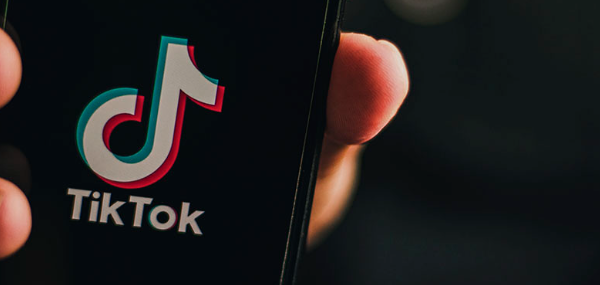TikTok has taken the world by storm since its launch outside China in 2017. The short-form video-sharing app now has over 1 billion active monthly users globally who spend hours daily scrolling through an endless stream of quirky dance videos, comedic sketches, and more. But for many outside its massive user base, TikTok remains a mystery. What makes it so addicting? And how has it managed to rewrite the rules of social media so successfully? In this article, we’ll look deeper at TikTok and what differentiates it from other platforms.
TikTok, at its core, allows users to watch, like, comment on, and create short music videos of themselves ranging from 15 to 60 seconds. Unlike platforms such as Instagram and Snapchat, which center on friends and followers, TikTok’s “For You” page algorithmically chooses videos for each user based on what they interact with rather than who they follow. As The New York Times observes, this approach focuses less on social connections and more on immersive entertainment optimized by artificial intelligence.
TikTok’s Evolution and Impact
While TikTok is best known today for its meme videos and influencers, its roots were in lip-syncing and dance. The app grew out of Musical.ly, a previous startup focused on lip-syncing music videos, which Byte Dance acquired in 2017, combining it with their similar Chinese app Doyen and soft launching the united platform as TikTok worldwide. In its early forms, TikTok centered on creating 15-second music lip-sync or dance videos to a massive selection of songs. Users could duet or react to other videos, allowing trends to catch fire through imitation.
Fortnight-inspired dances like Flossing and the Carlton became viral hits and spread through TikTok long before reaching other apps. While lip-syncing remains popular, TikTok’s format has expanded to accommodate longer amateur comedy sketches, tutorials, and more open-ended storytelling. Riding this evolution, popular categories now span everything from baking to social justice. Top creators like Charli D’Amico, Loren Gray, and Addison Rae built massive followings, acting as influencers across formats.
TikTok hasn’t rested on laurels, consistently evolving its tools. Advanced camera filters boost creative control, while the Duet feature allows two creators to collaborate seamlessly. Stitches let users combine multiple video clips to form narratives or time lapses. And ‘Green Screen’ mode has found new life by reacting to memes or impersonating celebrities. Responding and commenting foster engaged communities around viral moments. The rise of TikTok hasn’t come without growing pains. As a Chinese-owned company, suspicions of data use and censorship cast shadows. Cyberbullying plagued early forms despite protections added since. TikTok faced a 2020 US ban threat under national security reviews before reaching a deal to offshore US user data. Controversies rarely last long on TikTok, however, due to its fast news cycle.

TikTok has impacted culture far outside its platform, too. TikTok dances and sounds frequently spread to Instagram, YouTube, and beyond. Buzzfeed reports that over 300 million US TikTok videos used just 25 popular songs in 2021. TikTok’s short video focus has some predicting its format will become the new lingua franca of online media across industries like online shopping, gaming, and more over time. As TikTok acknowledges, its AI recommendations make its platform truly successful at keeping 1 billion users entertained for hours on end. By hyper-personalizing each “For You” page, TikTok mimics the unpredictable flow of television in your pocket, making itself a constant companion. While this approach has also garnered privacy and manipulation concerns, it’s undeniably effective – and shows no signs of slowing since launching globally just five short years ago.
TikTok Apart from Other Platforms
The article discusses how, unlike platforms like Instagram and Snapchat, which center on social connections between friends and followers, TikTok’s “For You” page takes a different approach to personalizing content. Rather than focusing on who a user follows, TikTok’s algorithm chooses videos for each individual based on their interests and interactions with videos. It closely watches what videos users watch fully, like, comment on, and share and uses this data to curate a highly tailored stream of new content through its “For You” page.
This personalized stream powered by artificial intelligence aims to keep users constantly entertained with an endless, unpredictable flow of discoveries. It mimics the spontaneous experience of channel surfing live TV rather than a linear fixed feed from friends. As a result, TikTok is highly engaging and can consume users’ time without them realizing as they are immersed in this personalized entertainment experience. This distinguishes TikTok’s content approach and personalization capabilities from the social focus of platforms like Instagram and Snapchat.
Evolving viral videos online

TikTok has refined how users create shareable, viral video content online through features like its extensive music library. Creators can easily synchronize dances, sketches, and more to popular copyrighted songs. While this has raised legal issues, it remains core to how content spreads organically on TikTok. Hashtags also function to spark multimedia trending challenges between global communities rather than as general topic hubs. These components helped evolve TikTok’s formula for viral hits shared globally.
TikTok has undoubtedly rewritten social media rules on a scale exceeding any platform before it. By focusing on viral video trends optimized by cutting-edge AI rather than friends and connections, TikTok created an addictive formula for mobile entertainment supremacy. It pulls ahead of competitors by continuously surprising users with new content curated for their interests rather than linear social feeds.
Whether entertaining insiders with niche meme genres or spreading pop culture globally, TikTok helps anything and everything go viral in a way no other platform has matched. While questions remain around its approach to privacy, content policies, and political impartiality, TikTok as a force of online trends shows no signs of slowing. Other networks scramble to play catch-up through innovations like Instagram’s short videos or Snapchat’s TikTok-like Spotlight feature. TikTok has proven itself to be the leading innovator in the social media space for modern attention spans everywhere.



